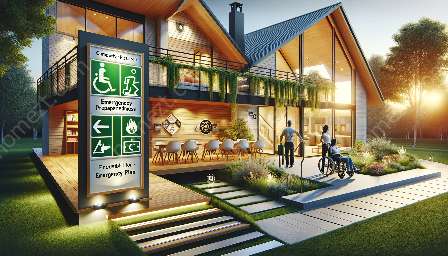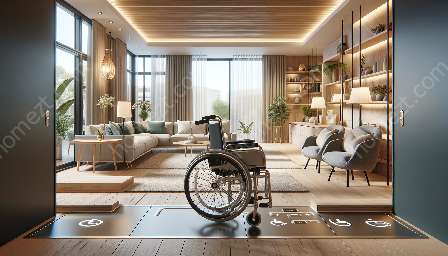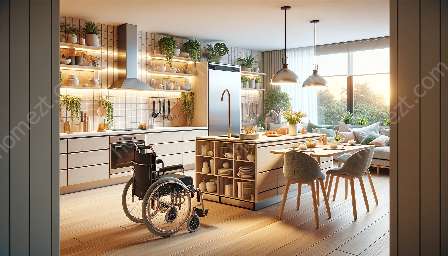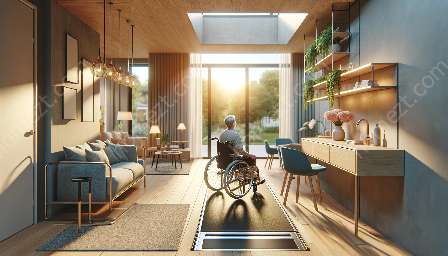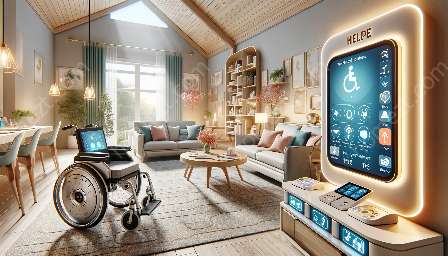Providing care for people with disabilities at home requires carers to ensure a safe and secure environment. This article explores safe manual handling techniques, with a focus on promoting home safety for people with disabilities and enhancing overall home security.
Understanding the Importance of Safe Manual Handling
Carers play a vital role in assisting individuals with disabilities in their day-to-day activities. Safe manual handling techniques are essential for carers to protect themselves and those they care for from injuries and to create a safe living environment.
Practical Tips for Safe Manual Handling
It's crucial for carers to follow best practices when it comes to manual handling. Here are some practical tips:
- Assess the Situation: Before handling tasks, conduct a risk assessment to identify potential hazards and determine the best approach.
- Use Proper Lifting Techniques: When lifting a person or an object, remember to bend the knees, keep the back straight, and use the legs to lift, avoiding any sudden or jerky movements.
- Utilize Assistive Devices: When available, make use of equipment such as hoists, slide sheets, and transfer belts to facilitate safe movement and reduce physical strain.
- Communicate Effectively: Ensure clear communication with the person you are caring for, and establish a plan before executing any movements or transfers.
- Prevent Falls: Implement measures to prevent falls, such as installing grab bars, maintaining clutter-free pathways, and using non-slip mats.
Assisting with Daily Living Activities
Many individuals with disabilities require assistance with activities of daily living. When supporting them, carers should consider using safe manual handling techniques to optimize comfort and minimize the risk of injuries. This includes:
- Personal Care: When assisting with tasks like bathing, dressing, and toileting, carers should prioritize the use of ergonomic tools and techniques to reduce strain and maintain the individual's dignity.
- Mobility Support: Carers must employ safe manual handling practices when helping individuals move from one place to another, whether it's transferring from a bed to a wheelchair or supporting walking activities.
- Household Tasks: Whether it's preparing meals, doing laundry, or cleaning, carers should approach household tasks with safety in mind, utilizing appropriate equipment and techniques to minimize physical strain.
Integrating Home Safety for People with Disabilities
Safe manual handling goes hand in hand with enhancing home safety for people with disabilities. Carers can take additional measures to create a secure environment, such as:
- Adaptive Equipment: Identify and utilize adaptive equipment and assistive devices that promote independence and safety within the home.
- Accessible Home Modifications: Consider making necessary modifications to the home, such as installing ramps, handrails, and grab bars to facilitate ease of movement and prevent accidents.
- Emergency Preparedness: Develop and communicate emergency plans tailored to the specific needs of the individuals in your care, ensuring their safety in the event of unexpected situations.
Enhancing Overall Home Security
Improving home security is essential for providing a safe and comfortable living environment for individuals with disabilities. Consider the following methods to enhance overall home security:
- Lighting and Visibility: Ensure adequate lighting, especially in entryways, pathways, and communal areas, to deter potential intruders and prevent accidents.
- Door and Window Protection: Install secure locks, alarms, and reinforced doors and windows to prevent unauthorized access and enhance overall security.
- Security Systems: Utilize modern security systems, including cameras, motion detectors, and smart technology, to monitor and protect the home effectively.
- Community Engagement: Foster a sense of community and support among neighbors, creating a network of assistance and vigilance to enhance home security.
Conclusion
Safe manual handling techniques are crucial for carers looking after individuals with disabilities at home. By integrating these techniques into daily care routines and aligning them with home safety and security measures, carers can create a supportive and secure environment that allows individuals with disabilities to thrive and live independently. Implementing these practices not only fosters safety but also promotes a sense of empowerment and well-being for everyone involved.



